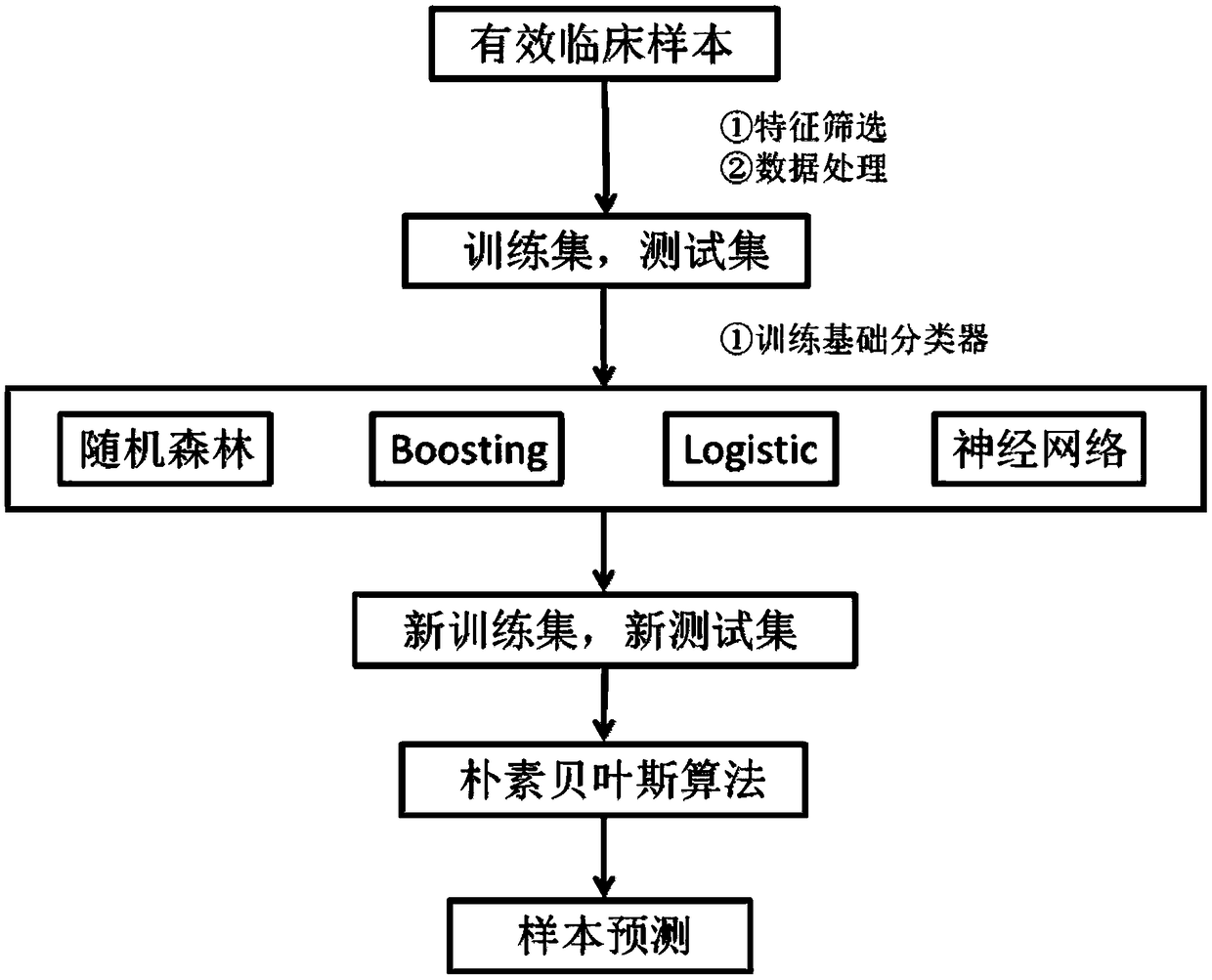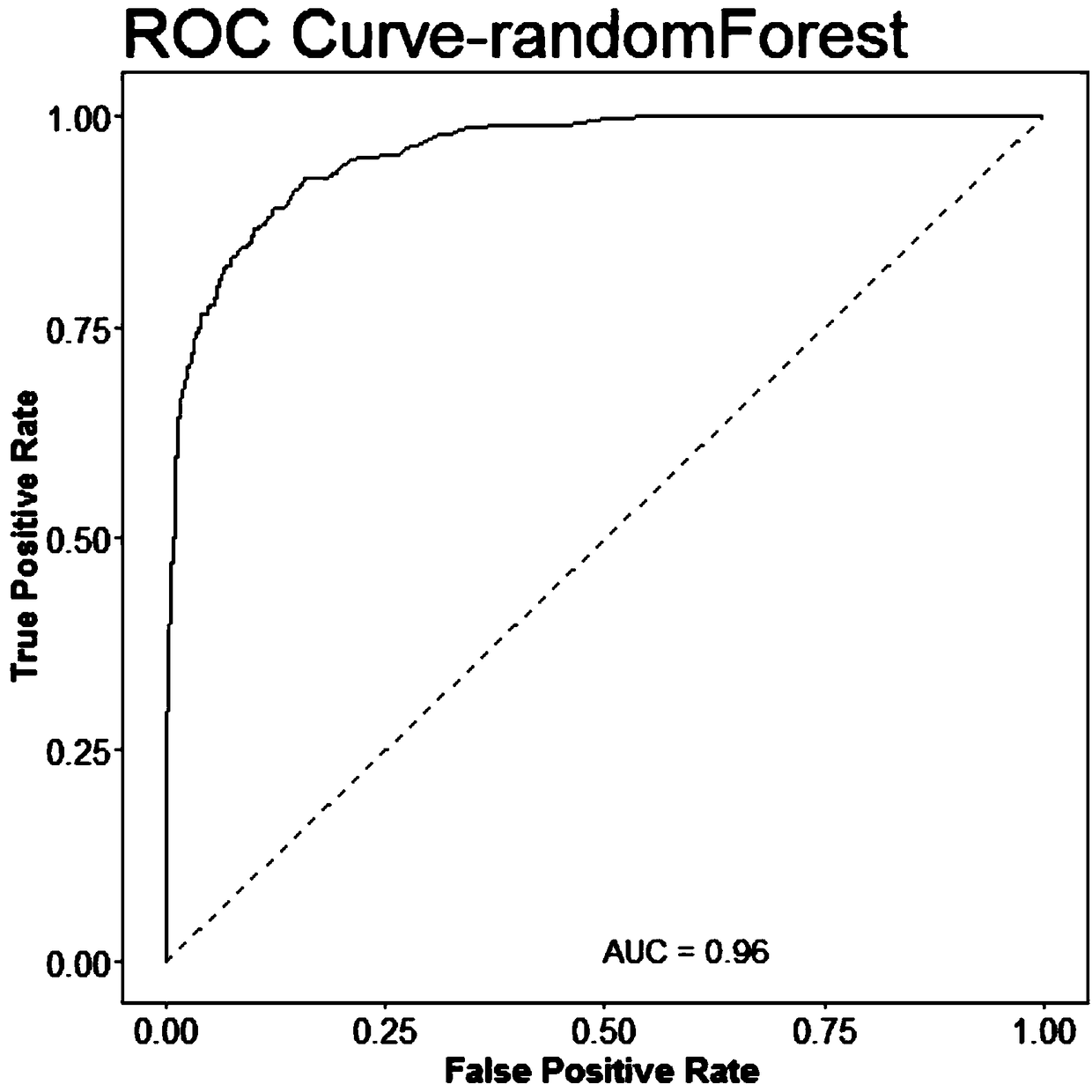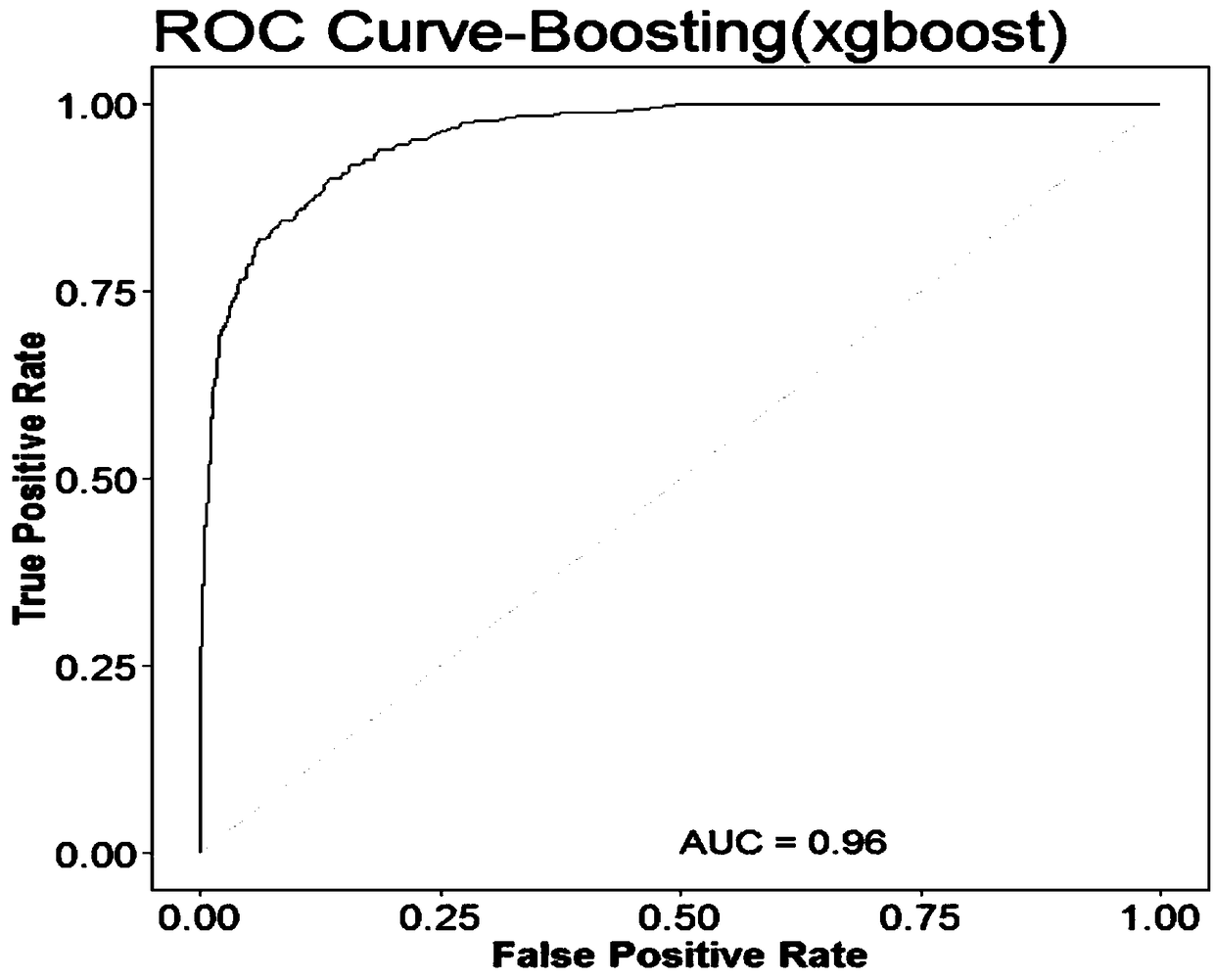Kawasaki disease risk assessment model building method and system based on ensemble learning
A technology of risk assessment model and construction method, which is applied in the field of construction method and construction system of Kawasaki disease risk assessment model, which can solve problems such as easy misdiagnosis, children missing the best treatment time, missed diagnosis, etc., and achieve the effect of accurate evaluation model
- Summary
- Abstract
- Description
- Claims
- Application Information
AI Technical Summary
Problems solved by technology
Method used
Image
Examples
Embodiment
[0144] In order to verify the effectiveness of the Kawasaki disease risk assessment method based on integrated learning of the present invention, the time range selected in this embodiment is the data of 42498 patients in the electronic case from 2008.7 to March 2018.
[0145] The analysis of sensitivity, specificity and correctness is based on a two-class problem. Two classifications are defined as positive and negative. Each object in the positive class becomes a positive instance, and each object in the negative class becomes a negative instance. . Generally, when predicting Kawasaki disease, Kawasaki disease samples are in the positive category, and other fever patients are in the negative category. Using the classification model to predict the test sample, there will be four cases. If an instance is a positive class and is predicted as a true positive (TP), if the instance is a negative class and is predicted as a positive class, it is called a false positive class (false p...
PUM
 Login to View More
Login to View More Abstract
Description
Claims
Application Information
 Login to View More
Login to View More - R&D
- Intellectual Property
- Life Sciences
- Materials
- Tech Scout
- Unparalleled Data Quality
- Higher Quality Content
- 60% Fewer Hallucinations
Browse by: Latest US Patents, China's latest patents, Technical Efficacy Thesaurus, Application Domain, Technology Topic, Popular Technical Reports.
© 2025 PatSnap. All rights reserved.Legal|Privacy policy|Modern Slavery Act Transparency Statement|Sitemap|About US| Contact US: help@patsnap.com



